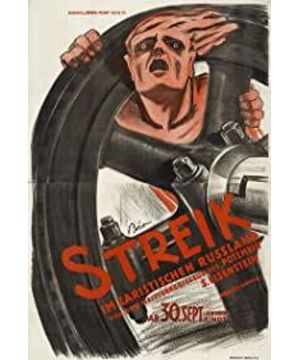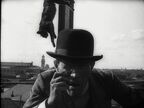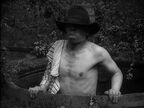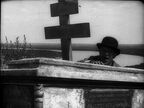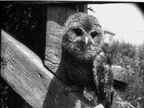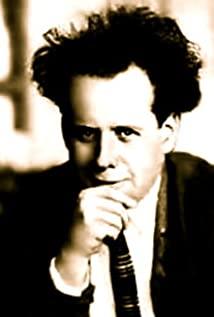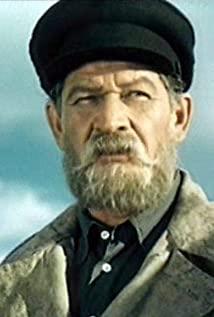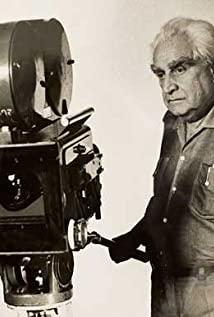In the 1920s and 1930s, sound films began to appear. Although they did not pose a great threat to silent films at first, due to the uncertainty of live performances, the development of recording technology made the synchronization of sound and pictures more accurate and cost-effective. , the sound has greatly enhanced the realism of the film, the sound film began to become the mainstream, and the silent film, once called the masterpiece of "the great mute", began to no longer need to sound. The emergence of sound films is the result of technological development, but it has contributed very little to the art of film and video. Even when we seem to receive more information while watching movies, because the sense of the ears is opened, we ignore the use of the eyes. Movies to see are the essence of video art.
The montage school of the Soviet Union is full of hostility to the lively "newborn" of the sound film. The montage school advocates that through the organic and conscious combination of a single picture lens into fragments, it can realize the display of the theme in the conflict and achieve a unity. Add one more than two image effects. Eisenstein, who first brought the theory of montage to film practice, especially hated the use of sound in film, and even dialogue, predicting that synchronizing sound would push the film back to its staged beginnings, arguing that it destroyed the elasticity of editing.
The appearance of sound made the director have to consider the performance of the picture and the transmission of the sound. Before, only the presentation of the camera and the picture had to be considered, but the appearance of the sound made people constantly need to balance the sound and the picture, and also consider the presentation of the dialogue. Of course, the presentation of sound avoids the annoying long subtitles inserted in the middle of the plot during the silent film period, making the plot smoother and the picture more three-dimensional. If there is no use of sound in the film, we will probably never see "The Sound of Music" .
Although the objections of Eisenstein and others have long been swept away by the wheel of history, their remarks make us think about some questions, how helpful is sound to the presentation of images.
Although modern technology has made it very easy to record and edit sound, in the early days, film equipment had to record sound and video simultaneously, the camera was limited to a small area, due to the huge microphone recording equipment, the actor's costumes had to be carefully It is designed so as not to be worn out, and the actors do not dare to walk around so that the sound cannot be recorded. In "Singing in the Rain", there are actresses who are not used to the microphone, so in the end they can't shoot the sound and picture synchronization anyway. Most of the early sound film footage It is a fixed shot, and the concept of a 100% sound film appeared. The pictures and plots do not have much artistic content. The sound can help the actor to shape the character, but when we watch Chaplin's performance, we can fully understand what he wants to shape without any sound. character and any emotions of the character.
Eisenstein's "Strike", as the initial application of montage theory, although it seems that the use of images is too simple and direct, the direct use of a large number of superimposed paintings, and the large-scale direct jumps of lens jumps in time and space, but we See the direct narration, representation, metaphor, and lyrical function of the film on the image, without the presentation of any sound.
A young man in makeup is followed by a bearded old man sitting on a park bench. The narrative function is completed through the superimposition of the three pictures of the old man, the young man and the old man, and it has a sense of comedy. The metaphor of a person's image is conveyed through the superimposed paintings of dogs, monkeys, eagles and other animals and the close-up faces of the four workers, and the characteristics of this person can be shown without lines and events. The last scene of the slaughtering of striking workers and the scene of the slaughtering of cows is a jump in time and space, which has become a metaphor for the classic "human slaughter field". The diligent workers are like cows, and the brutal slaughter scene symbolizes the strike movement. The tragedy of the workers, through the combination of this group of shots, Eisenstein conveyed a strong rendering force for the theme and expressed his thinking about the labor movement in a metaphorical way, reaching a lyrical height.
The images of Eisenstein's films are like literature, each shot is a morpheme in the literary concept, and these morphemes are combined according to his ideas, the presentation of the theme, and the image effects through editing, and fully expressed in an explosive form. Clashes, shocks and even violence. Sometimes the production of language and sound has a preconceived feeling, and the understanding of the sound will affect the understanding of the picture. And language is usually concealed and false, seeing is believing, and what the sound can explain sometimes can't bring us more information than the picture.
Although the use of sound by Eisenstein and others is too extreme, but as an art of images, the use of pictures and images is the most essential.
Class Notes and References "Understanding Movies" by Louis Janeti
View more about Stachka reviews


